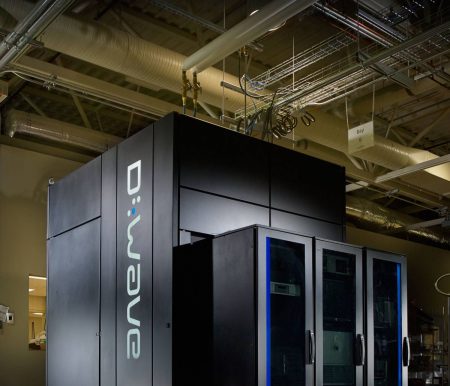January 13, 2017 – Google, NASA, Lockheed Martin and the Los Alamos National Laboratory are early adopters of the D-Wave quantum computer. D-Wave Systems, a Burnaby, British Columbia company, currently lead a field that includes IBM and Microsoft in trying to bring quantum computing out of the laboratory and into the hands of business, industry and government. To-date, however, programming for quantum computers remains difficult. Rather than bits, quantum technology uses qubits to write code and apparently unlike the former, they are fragile. To program a quantum computer D-Wave’s CEO, Bo Ewald, says we need a lot more smart people creating applications and software tools. That’s why the company last week launched a new initiative to stimulate development of programs for D-Wave systems. A tool they have developed, called Qbsolv, will now be released as “open source.” That means anyone will be able to use it and they won’t need a degree in quantum physics to start programming the technology.
What is open source? In the world of software many developers have made available the original software source code for computer languages, operating systems and applications. These open source tools are the opposite of “proprietary “ or “closed source” systems. Open source arose from the 1980s free software movement, a guerilla response to companies like Microsoft and IBM who sold closed source software licenses with expensive upgrades and maintenance contracts.
Developers of the various UNIX operating systems were among the initiators of what eventually became the Open Source Initiative. The Firefox and Chrome browsers that I use on my desktop and chrome-book laptop are products of open source. The Android operating system found on the majority of smartphones today is open source. Users are encouraged to enhance the code, develop applications, and share their results.
D-Wave, with the release of the source code of Qbsolv, is joining the open source movement in the hope it will be a quantum computing game changer. And they are not alone in this pursuit. Last year a Los Alamos researcher, Scott Pakin, released Qmasm, a quantum macro assembler, to help Qbsolv developers create programs that current D-Wave systems can’t even handle. These will be programs for future releases of ever more powerful D-Wave systems.
Other quantum computing developers see the merit of making the technology more accessible. For example, IBM offers a cloud-based quantum computing platform for “students, researchers and general science enthusiasts” to get a hands-on experience creating and running algorithms and experiments using qubits. Even Microsoft has created a quantum computing simulator to give developers an opportunity to write code and experiment with qubit-based applications.
Early users of Qbsolv have found it beneficial. It has enhanced the problem solving capability of D-Wave systems by a 20-times factor. States Fred Glover, Professor at University of Colorado and CTO of Opt Tek Systems, “Qbsolv opens a world of possibility for developers….Quantum applications are a new frontier and we’re just beginning to scratch the surface.” The current problems addressed, however, seem less real-world and more esoteric.
For example Qbsolv is being used to find “a faster solution to the multiple-sequence alignment problem….to study the evolution and function of DNA, RNA and protein.” Another application developed by Los Alamos scientists has helped to “find better ways of splitting the molecules on which they performed electronic structure calculations, among the most computationally intensive of all scientific calculations.”
Where can Qbsolv take quantum computing? Scientists see its potential for helping solve some of the world’s biggest challenges including improving crop yields to feed a growing human population, or addressing the planet’s changing climate through more accurate modeling of the environment, or finding new ways to treat and cure disease. A recent quantum application successfully predicts epileptic seizures in patients 20 to 40 minutes before they occur.
















